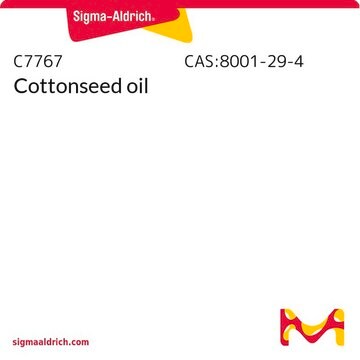X0379
Xanthohumol
powder, ≥96% (HPLC)
Sinónimos:
(E)-1-[2,4-Dihydroxy-6-methoxy-3-(3-methyl-2-butenyl)phenyl]-3-(4-hydroxyphenyl)propenone, 2′,4,4′-Trihydroxy-6′-methoxy-3′-prenylchalcone
About This Item
Productos recomendados
product name
Xanthohumol from hop (Humulus lupulus), ≥96% (HPLC)
biological source
plant (Humulus lupulus)
assay
≥96% (HPLC)
form
powder
mp
172 °C
solubility
ethanol: 10 mg/mL
storage temp.
2-8°C
SMILES string
COc1cc(O)c(C\C=C(/C)C)c(O)c1C(=O)\C=C\c2ccc(O)cc2
InChI
1S/C21H22O5/c1-13(2)4-10-16-18(24)12-19(26-3)20(21(16)25)17(23)11-7-14-5-8-15(22)9-6-14/h4-9,11-12,22,24-25H,10H2,1-3H3/b11-7+
InChI key
ORXQGKIUCDPEAJ-YRNVUSSQSA-N
General description
Application
- to treat glioblastoma cells to test its effect on inducing apoptosis
- to test its protective effect in renal ischemia/reperfusion (I/R) injury
- as a component of Dulbecco′s modified Eagle medium (DMEM) to test its antiviral activity in Huh7.5 cells infected with hepatitis C virus cell culture (HCVcc) system
Biochem/physiol Actions
Storage Class
11 - Combustible Solids
wgk_germany
WGK 3
flash_point_f
Not applicable
flash_point_c
Not applicable
ppe
Eyeshields, Faceshields, Gloves
Certificados de análisis (COA)
Busque Certificados de análisis (COA) introduciendo el número de lote del producto. Los números de lote se encuentran en la etiqueta del producto después de las palabras «Lot» o «Batch»
¿Ya tiene este producto?
Encuentre la documentación para los productos que ha comprado recientemente en la Biblioteca de documentos.
Artículos
Chronic inflammation is an underlying factor in the development and progression of many of the chronic diseases of aging, such as arthritis, atherosclerosis, diabetes, and cancer.
Nuestro equipo de científicos tiene experiencia en todas las áreas de investigación: Ciencias de la vida, Ciencia de los materiales, Síntesis química, Cromatografía, Analítica y muchas otras.
Póngase en contacto con el Servicio técnico






